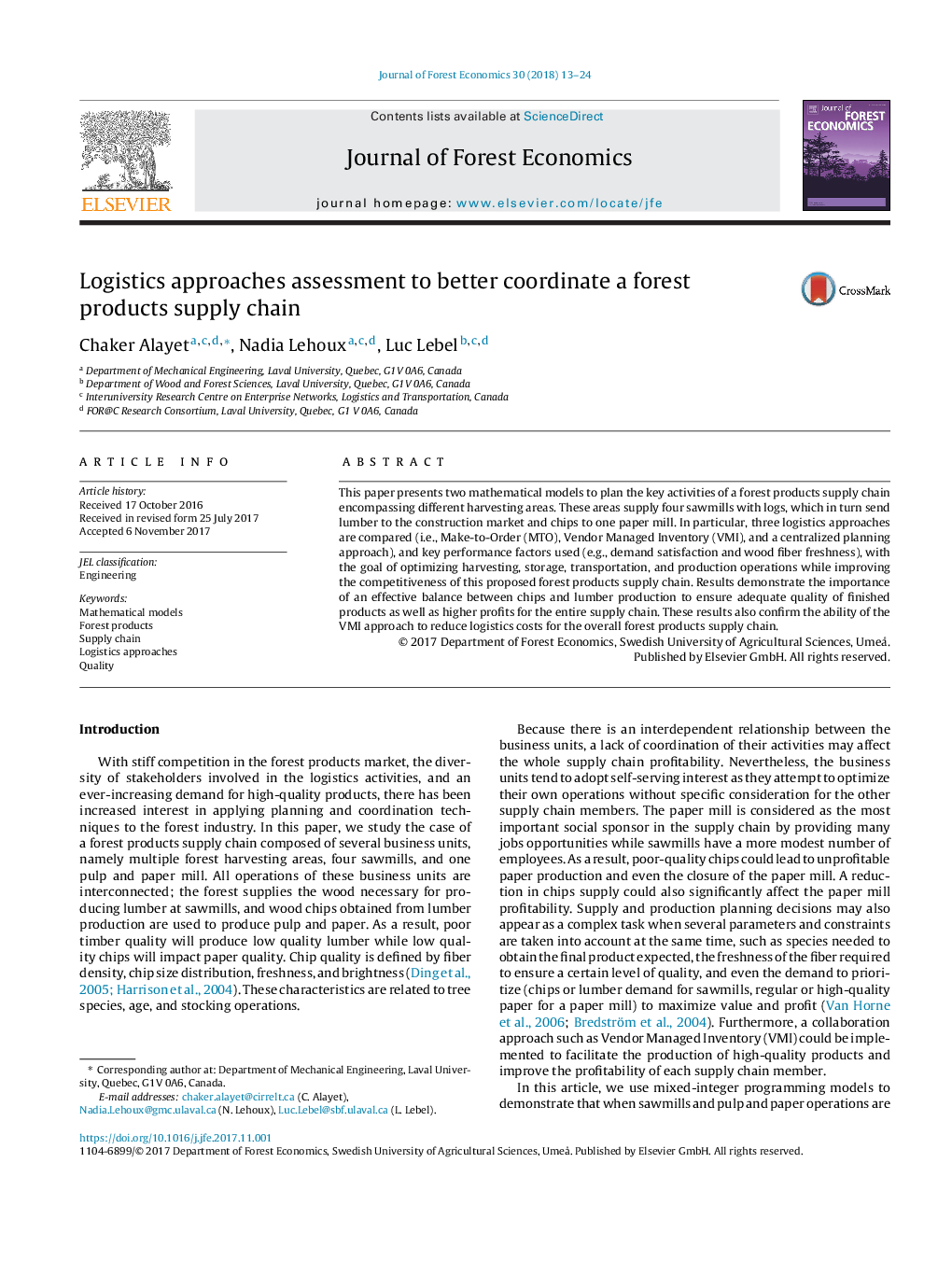| Article ID | Journal | Published Year | Pages | File Type |
|---|---|---|---|---|
| 6545129 | Journal of Forest Economics | 2018 | 12 Pages |
Abstract
This paper presents two mathematical models to plan the key activities of a forest products supply chain encompassing different harvesting areas. These areas supply four sawmills with logs, which in turn send lumber to the construction market and chips to one paper mill. In particular, three logistics approaches are compared (i.e., Make-to-Order (MTO), Vendor Managed Inventory (VMI), and a centralized planning approach), and key performance factors used (e.g., demand satisfaction and wood fiber freshness), with the goal of optimizing harvesting, storage, transportation, and production operations while improving the competitiveness of this proposed forest products supply chain. Results demonstrate the importance of an effective balance between chips and lumber production to ensure adequate quality of finished products as well as higher profits for the entire supply chain. These results also confirm the ability of the VMI approach to reduce logistics costs for the overall forest products supply chain.
Related Topics
Life Sciences
Agricultural and Biological Sciences
Agronomy and Crop Science
Authors
Chaker Alayet, Nadia Lehoux, Luc Lebel,
